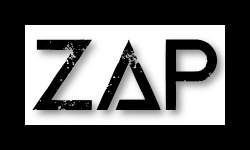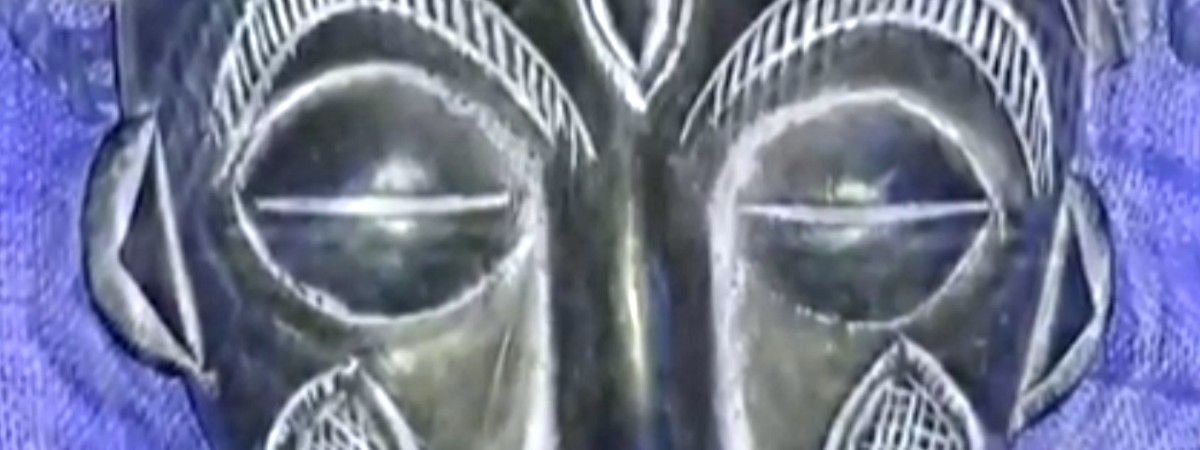|
The Zero Anthropology Project
Webfolio for Maximilian C. Forte 
HOME
|
SITE MAP
|
ABOUT
|
RESEARCH
|
MEDIA
|
ARTICLES
|
REVIEWS
|
COURSES
|
ZAP SITES
|
CONTACT



DEEP OBEAH from Maximilian Forte on Vimeo.
This is my animation of a musical spoken word
poem by my late friend and collaborator,
Dr. Roi Kwabena.
The piece is titled Deep Obeah and is
perhaps the most musical and most sung of the
pieces that he produced and that made its way
onto his Y42K album. Also, so far this is the
only one of my productions in which Roi Kwabena
actually appears and performs at several points.
Deep Obeah is possibly Roi Kwabena’s
expression of his own sense of frustration with
the almost radioactive accumulation of global
injustice, shock waves that make themselves felt
far and wide, rendering life on this planet
increasingly toxic, increasingly impossible for
many if not most. The work symbolically turns to
obeah, “sorcery” to bring events beyond
one’s control more into alignment with a desire
for a better future.
Eurocentrism and African Power
The work validates obeah, which is also a
strategic move that was part of Roi Kwabena’s
public anthropology. Obeah had long been scorned
by colonial elites in the Anglophone Caribbean,
and their pseudo-nationalist Afro-Saxon
successors who more often than not were
intermediaries and facilitators for the
neo-colonial project. Under British colonialism,
obeah, like drumming—both being emphasized in
the video—were banned. In Jamaica, obeah was
repeatedly banned: in 1760, 1781, 1826, 1898,
and 1938. Moreover, obeah, like vodoun
(“voodoo”) in Haiti, was associated with
numerous slave revolts: the Kromanti slave
revolt led by Tacky in 1760, the Baptist War of
1831–1832, and the Morant Bay Rebellion in 1865.
Obeah could be vital in imparting a sense of
magical invulnerability, critical in mobilizing
slaves for resistance and rebellion.
In the neo-colonial period, Dr. Eric Williams,
noted historian and first Prime Minister,
himself scorned widespread “ignorance,” speaking
as a creature of the Enlightenment, and
reportedly said it would not be long before the
obeahman would be rehabilitated (Moore &
Johnson, 2004, p. 107). Of course, the real
problem with “obeah” is that it was an
alternative source of power, a challenge to the
mystique of the paramount leader, and all must
be razed so that a centre can be fabricated.
Unlike the ethnologist and dictator of Haiti,
Papa Doc Duvalier, Williams would not remake
himself into the arch sorcerer of the island if
that meant shunning Oxford.
Obeah is decidedly of African origins, which is
not to say that it was not “remixed” in the
Caribbean. Obeah came with Twi-speaking Akan
slaves from the Ashanti region of what is today
Ghana. The Jamaican Maroons have preserved
several of the Twi religious names:
“Yankipong (or Nyame) as the Supreme
Deity. Below the Supreme Deity are the
spirits of the ancestors (‘duppies,’ cf. Twi
adope, ‘spirit’)…In addition to obeah-man
(assuming, of course, that this is derived
from Twi obayi-fo, ‘sorcerer’),
Maroons have preserved the name of his
counterpart, the priest, in the form
kumfu-man (derived from Twi okonfo).
Among the general Jamaican population,
kumfu-man has been replaced by myal-man.
(Myal seems here to mean ‘spirit’; the
precise African language etymon is
uncertain)”. (Payne-Jackson & Alleyne, 2004,
p. 36)
Henry (2003, p. 55) writes that obeah came from
the Popo people of Dahomey.
In Trinidad, an obeahman of great repute is
still remembered, Samuel Ebenezer Elliot
(1901-1969). Ebenezer, popularly known as
Papa Neza, was a “merikin”
(American): of African-American descent, settled
in Moruga, among freed American slaves who
fought alongside the British against the nascent
United States. Papa Neza never took money as
payment for his services from the many clients
who sought his assistance given his widely
regarded powers. Instead Papa Neza might take
any money that was left for preparing the four
communal feasts that he would host each year.
This is important, because while many have seen
obeah as a practice motivated by selfish gain,
and harmful to the “community,” it is a practice
that is in fact sustained by the community. (See
Carolyn Kissoon’s article in The Express,
“A
trip to the obeahman — When all else fails…”
[May 10, 2009)].)
Obeah is Science
Obeah is not a religion, as much as a practice,
a process, a belief in magical intervention in
the world. One can find obeah practice in
numerous Afro-Caribbean faiths, such as the
Revival/Pukumina church in Jamaica, or Shango
and Spiritual Baptists in Trinidad. In Jamaica,
Revival was connected to both obeah and healing:
“Magical beliefs are termed Science
by Revivalists and the source of supply for
this belief is invariably one of the
numerous books published by the DeLaurence
Company….These beliefs relate primarily to
healing and sorcery, and are therefore found
primarily in these contexts in Revival
Cults. Science is considered by many to be
as powerful as the use of spirits….The
healer and the obeah-man are usually not two
different people; invariably each practises
both, some being more renowned for obeah,
and some for healing”. (Seaga, 1969, p. 11,
quoted in Payne-Jackson & Alleyne, 2004, p.
115)
References and Further Reading:
Clark, Austin H. (1912). “An Ingenious Method of
Causing Death Employed by the Obeah Men of the
West Indies”. American Anthropologist,
Vol. 14, No. 3, pp. 572–574.
Clarke, Peter B., ed. (1998). New Trends and
Developments in African Religions. Westport,
CT: Greenwood Press.
Djedje, Jacqueline Cogdell. (1998). “Remembering
Kojo: History, Music, and Gender in the January
Sixth Celebration of the Jamaican Accompong
Maroons”. Black Music Research Journal,
p. 67.
Girlado, Alexander (n.d.).
Obeah: The Ultimate Resistance.
Slave Resistance: A Caribbean Study
[website].
Henry, Frances. (2003). Reclaiming African
Religions in Trinidad: The Socio-Political
Legitimation of the Orisha and Spiritual Baptist
Faiths. Cave Hill, Barbados: University
Press of the West Indies.
Moore, Brian L., and Johnson, Michele A. (2004).
Neither Led nor Driven: Contesting British
Cultural Imperialism in Jamaica, 1865–1920.
Mona, Jamaica: University Press of the West
Indies.
Moorish, Ivor. (1982). Obeah, Christ and
Rastaman: Jamaica and its Religion.
Cambridge UK: James Clarke & Co.
Murphy, Joseph M. (1994). Working the Spirit:
Ceremonies of the African Diaspora. Boston:
Beacon Press.
Olmos, Margarite Fernández, and
Paravisini-Gebert, Lizabeth. (1997). Sacred
possessions: Vodou, Santería, Obeah, and the
Caribbean. New Brunswick, NJ: Rutgers
University Press.
Olmos, Margarite Fernández, and
Paravisini-Gebert, Lizabeth. (2003). Creole
religions of the Caribbean: An introduction from
Vodou and Santería to Obeah and Espiritismo.
New York: NYU Press.
Payne-Jackson, Arvilla, and Alleyne, Mervyn C.
(2004). Jamaican Folk Medicine: A Source of
Healing. Mona, Jamaica: University Press of
the West Indies.
Savage, John (2007). “‘Black Magic’ and White
Terror: Slave Poisoning and Colonial Society in
Early 19th Century Martinique”.
Journal of Social History, Vol. 40, No. 3,
p. 635.
Thornton, S. Leslie. (1904). “‘Obeah’ in
Jamaica”. Journal of the Society of
Comparative Legislation, Vol. 5, No. 2, pp.
262–270.
Turner, Mary. (1998). Slaves and
Missionaries: The Disintegration of Jamaican
Slave Society, 1787-1834. Cave Hill,
Barbados: University of the West Indies Press.
Udal, J.S. (1915). “Obeah in the West Indies”.
Folklore, Vol. 26, No. 3, pp. 255–295.
HOME
|
SITE MAP
|
ABOUT
|
RESEARCH
|
MEDIA
|
ARTICLES
|
REVIEWS
|
COURSES
|
ZAP SITES
|
CONTACT

©
2011-2020, Maximilian C. Forte.
|